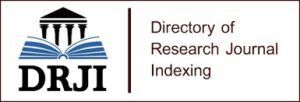Impact of Commercial Bank Credit on Small and Medium Scale Enterprises in Nigeria: 1992 – 2022
The study analyzed the impact of commercial bank credit on small and medium scale enterprise in Nigeria: 1992 to 2022 using Autoregressive Distributed Lag model (ARDL). The stationarity results showed that SMEs profit (SMEP) and Lending rate (LENR) were integrated at levels I(0) while commercial bank credit to SMEs (CLSME) and money supply (TMS) were stationary after the first different. The result of the ARDL Bound test showed that long-run relationships are thus evident between the variables. Furthermore, the result demonstrates that the adjustment mechanism (ECMt-1) is statistically significant and has the necessary sign (negative). Showing that a short-term shock will eventually be brought to equilibrium at an average pace of 95% annually. The ARDL results showed that CLSME has a negative and a positive significant impact on SMEP in the short run and the long run, respectively. LENR has a positive significant and insignificant impact on SMEP in the short run and long run, respectively. Finally, TMS has a positive and a negative significant impact on SMEP in short run and the long run, respectively. The study concluded that commercial bank credit has impact on small and medium scale enterprise (SMEs) in Nigeria. Hence, the study recommended that commercial banks should prioritize lending to small and medium scale in Nigeria with a view to achieve rapid growth among SMEs in Nigeria, and government through monetary policy authority should reduce lending rate that will be profitable to small and medium enterprise with intention for business expansion and creation of jobs in the country.
Keywords: Commercial Bank Credit, Small and Medium Scale Enterprises, Lending Rate, and Money Supply.




















